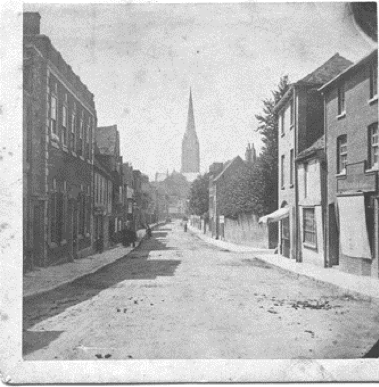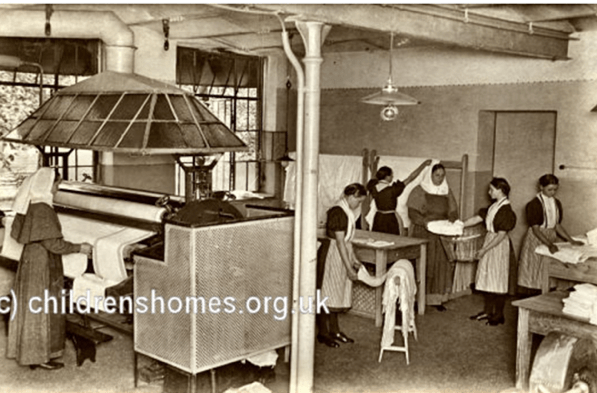The Story Behind Salisbury Women's Refuge
The history of the Refuge goes back over one hundred and sixty years. In 1857 the thirty-four-year old daughter of a Salisbury innkeeper opened a ‘House of Industry’ in St Ann Street. Prior to this there was just one establishment (apart from the Workhouse) caring for and training girls in the city. After the opening of the House of Industry, other establishments were begun but all of these were run by organisations rather than an individual.
With her only experience being a few years as a governess, Emily set about converting No’s 46 and 48 St Ann St to provide accommodation for up to eighteen orphan girls and a similar number of scholars (children under the then school leaving age of 12). There was also a laundry and workrooms. Poverty was rife in Victorian England, so orphans and poor girls needed accommodation and protection. The most common form of employment was that of a servant, so girls were trained to clean, sew and launder. Washing and mending was taken in (for a charge) from the richer residents of Salisbury. Other costs were met by fees from parishes who had sent orphans or local charitable donations. Emily also ran an employment agency for servants from her establishment.
Millicent Wadham was a pupil there in the early 1900’s, and her memories were written down by her daughter. She was sent to the House of Industry by the gentry of the Dorset village where she lived after her mother died. She was ‘taught the 3 Rs plus a great deal of R.I, (Religious Instruction)’ and recalls that:
'Small children did run and fell seams, bigger children did smocking and fine needlework, all either worn by the children or made for members of The Close who demanded and got, very fine stitching indeed... The laundry work was hard, full of steam and scrubbing soap but for some reason my mother loved it and would have liked to go into one of the big houses as a laundry maid, but was considered too delicate'.
After Emily’s death in 1900, the House of Industry was run as a Trust and moved to larger accommodation in the same street. It changed its name to a ‘Training Home’ but was closed during the Second World War.
By the mid 1940’s, social conditions had changed and there was little need for domestic servants. In 1952, Salisbury Diocese bought the home and altered it to a ‘Mother and Baby Home’. There was still a great stigma attached to unmarried mothers. Pregnant women had to leave home for the birth of their child and generally gave them up for adoption.
In 1964, the premises were compulsorily purchased by the council and the home moved to its current location. However, as early as 1976 under-use of the home was being reported, as contraception had become more effective and widely available and unmarried mothers became more accepted in society. The future of the home became precarious and it closed in 1983.
A new purpose for the building was suggested by the recently formed branch of the Soroptimists in Salisbury. This organisation which seeks to improve the lives of women and girls, had started its local branch in 1976. Searching for an important ‘Programme Action’ to be involved with, the group invited the manager of the Swindon Refuge (founded in 1975) to give a talk. The movement to support women escaping domestic violence was started by Erin Pizzey, with the first ‘Refuge’ in England established in Chiswick, London, in 1971.
Offering funds and other support, the group persuaded the Diocese to change the nature of the home and Salisbury Women’s Refuge opened in 1984, becoming one of the earliest establishments to house and help women and their children in this highly important way.
Contact Information
Email: office@swrefuge.co.uk
Registered charity number: 1112497


